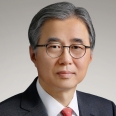As North Korea’s nuclear threat has increased, over 70% of South Koreans now support the indigenous acquisition of nuclear weapons. A coalition of 24 security-related civic groups launched a petition to gather ‘10 million signatures in support of indigenous nuclear armament.’ This reflects how dire South Korea’s security situation has become as well as the anxiety felt by the South Korean public. These activists want to strengthen and upgrade the ROK-U.S. alliance through the acquisition of nuclear weapons just like the United Kingdom or France.
North Korea has conducted six nuclear weapons tests to date, and its seventh nuclear test could take place at any time. North Korea is also expanding its nuclear delivery systems, including various types of ballistic missiles. In particular, North Korea’s tactical nuclear weapons arsenal which targets South Korea has rapidly increased and last July it deployed 250 transporter erector launchers in forward areas that are capable of firing up to 1,000 nuclear-capable ballistic missiles at once.
As the North Korea-Russia cooperation has recently become more visible and substantive, the threat to South Korea is becoming more serious. North Korea has used Russia’s invasion of Ukraine to test and verify its munitions on the battlefield, ranging from various types of artillery shells through to the KN-23 tactical ballistic missile, which is designed to target South Korea. It has also reportedly received suicide drone technology from Russia. North Korea is expanding the scope of North Korea-Russia cooperation and is pursuing a North Korea-China-Russia trilateral alliance. South Korea’s security is therefore becoming more vulnerable in the face of a North Korea-China-Russia nuclear coalition.
Some say that ROK-U.S. extended deterrence has been strengthened due to the Washington Declaration and through mechanisms like the Nuclear Consultative Group (NCG) or the ROK-U.S. Guidelines for Nuclear Deterrence and Nuclear Operations on the Korean Peninsula (Guidelines document). Yet many South Korean citizens still do not have confidence in the U.S. extended deterrence commitment and feel frustrated. Nuclear weapons are not only military weapons, but also political and psychological weapons that can instill fear in an adversary even just by their possession.
At a time like this, there is a need to start ‘Thinking the Unthinkable’ and consider all options to counter the North Korean nuclear threat that were inconceivable or taboo in the past. This includes leaving open the possibility of indigenous nuclear armament. Contrary to some claims, having nuclear weapons would not necessarily trigger the collapse of South Korea’s alliance with the United States. If a South Korean nuclear arsenal aligned with U.S. security interests and came to be regarded as a ‘common asset’ of the alliance, then the United States might accept or even support it. During the Cold War, the United States, together with the nuclear weapons of the United Kingdom and France, opposed the former Soviet Union’s formidable nuclear arsenal by establishing a balance of terror based on “countering nuclear weapons with nuclear weapons” that ensured that the Cold War ended cold.
The United Kingdom actually forged a closer alliance with the United States after acquiring nuclear weapons and it was even able to purchase Trident II submarine-launched ballistic missiles (SLBM) from the United States. France and Israel also acquired nuclear weapons, but their relations with the United States did not turn bad nor were they economically sanctioned. The United States did oppose France’s nuclear armament but it eventually used a nuclear-armed France to balance against the former Soviet Union.
South Korea’s nuclear weapons should come to be regarded as a ‘common asset’ of the alliance. To this end, it is necessary to choose the right wording and rationale of ‘indigenous’ nuclear armament instead of ‘independent’ nuclear armament. ‘Independent’ nuclear armament could mean a separation with the United States whereas South Korea’s ‘indigenous’ nuclear armament could be a common asset that protects the ROK-U.S. alliance against nuclear threats from North Korea, China, and Russia.
The task given to us is to find ways for future generations to live safely on this land. We must remain open to all options to deter North Korea’s nuclear threat and contribute to the development and prosperity of South Korea, whether that is redeploying tactical nuclear weapons, ROK-U.S. nuclear sharing, or indigenous nuclear armament.
* The view expressed herein was published on September 6 in The Munhwa Ilbo and does not necessarily reflect the views of The Asan Institute for Policy Studies

 Facebook
Facebook Twitter
Twitter